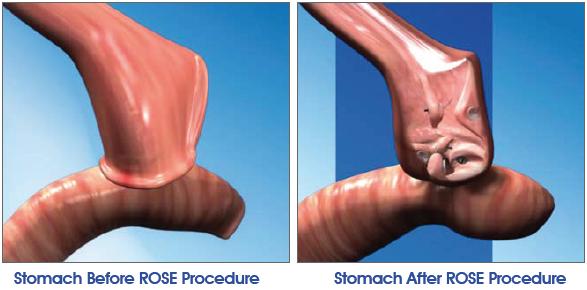No Incisions! New Surgery to Correct Weight Gain After Bariatric Surgery
Contact the nations leaders in endoscopic revision surgery ? The New York Bariatric Group at 877-321-NYBARIATRIC or online at www.stopobesityforlife.com to register for a free seminar Sept. 23rd & 24, 2009.
As the epidemic of obesity spreads throughout our country, more and more people are undergoing bariatric surgery; 220,000 in the last year alone, according to the American Society for Metabolic and Bariatric Surgery. While bariatric surgery offers the most reliable long-term weight loss results, studies have nevertheless shown that up to 44% of patients will regain the weight they lost after their surgery. This unhealthy weight regain may be caused by a gradual enlargement of the small stomach pouch or stoma (the connection between the pouch and small intestine), reducing the restriction that helps trigger the feeling of fullness and limits food intake. Typically, a second conventional surgery has been contraindicated because of the risk associated with the scar tissue from the initial procedure. Recently however, an innovative new surgery has offered the prospect of a second chance to bariatric patients who have regained weight.

Incisionless surgery makes use of the body?s natural orifices ? the mouth, anus or vagina ? to gain access to the inside of the body without having to cut through layers of skin, muscle and bone. The next wave in minimally invasive surgery, incisionless surgery minimizes pain, shortens hospital stays, reduces the risk of wound infection and eliminates visible scars.
One application of this type of surgery has been Restorative Obesity Surgery, Endolumenal, also known as the ROSE procedure. Using the Incisionless Operating Platform (IOP), an endoscope-like device made by USGI Medical that combines the flexibility of endoscopy with the therapeutic tools and access required to perform complicated surgical procedures within the abdomen, doctors are able to perform the procedure noninvasively. After passing the IOP down the patient?s throat, the surgeon uses the IOP to grasp tissue and deploy expandable tissue anchors to create multiple, circumferential tissue folds around the stoma and inside the pouch. This results in a ?purse-string? effect, shrinking the stoma back to the size it was immediately after the first surgery.
Suzanne, a patient of mine, has lost 25 pounds in the three months since the operation. Suzanne weighed 268 pounds before she decided to undergo her original gastric bypass procedure in 2004.
?At my lightest point after my first surgery, I was down to 165 pounds but I eventually regained 55 pounds,? Suzanne said. ?After undergoing the procedure I was surprised by how quickly I recovered. I remembered the discomfort I was in after my first procedure, but this time I had minimal pain and was able to return to work the day after surgery. I am so thankful that Dr. Garber has given me a second chance.?
A recent study, the largest of its kind, followed 116 ROSE patients for 12 months after their procedures and found the tissue anchors to be durable. With the growth of incisionless surgery, other weight loss procedures may become available. In the near future we will be offering Primary Obesity Surgery Endoscopy (POSE) with USGI?s IOP. This method enables doctors to use incisionless surgery in the first operation, rather than as a ?tune-up? to a previous conventional surgery. Not all patients are potential candidates for this procedure and should discuss the procedure with their doctor. Patients wishing to undergo ROSE will have to consult with a specialist first.
 Shawn Garber, MD, FACS, FASMBS is director of the New York Bariatric Group in New Hyde Park, NY. He is one of only a few surgeons in the Northeast using the new SILS technique for laparoscopic adjustable gastric banding. www.stopobesityforlife.com
Shawn Garber, MD, FACS, FASMBS is director of the New York Bariatric Group in New Hyde Park, NY. He is one of only a few surgeons in the Northeast using the new SILS technique for laparoscopic adjustable gastric banding. www.stopobesityforlife.com
